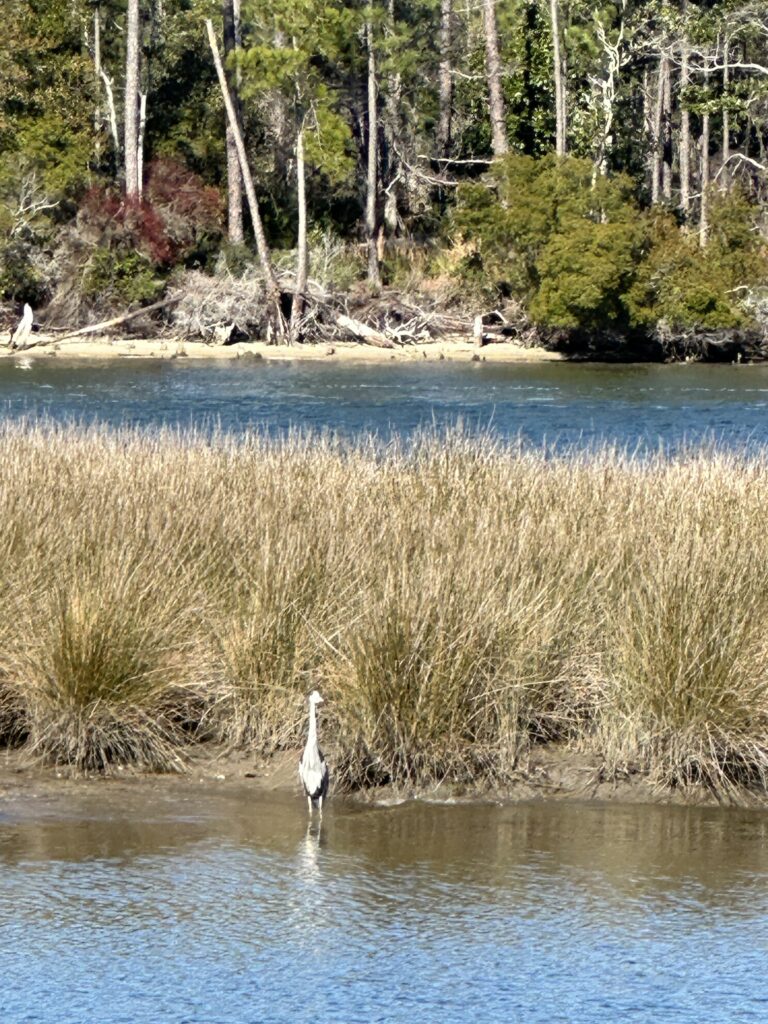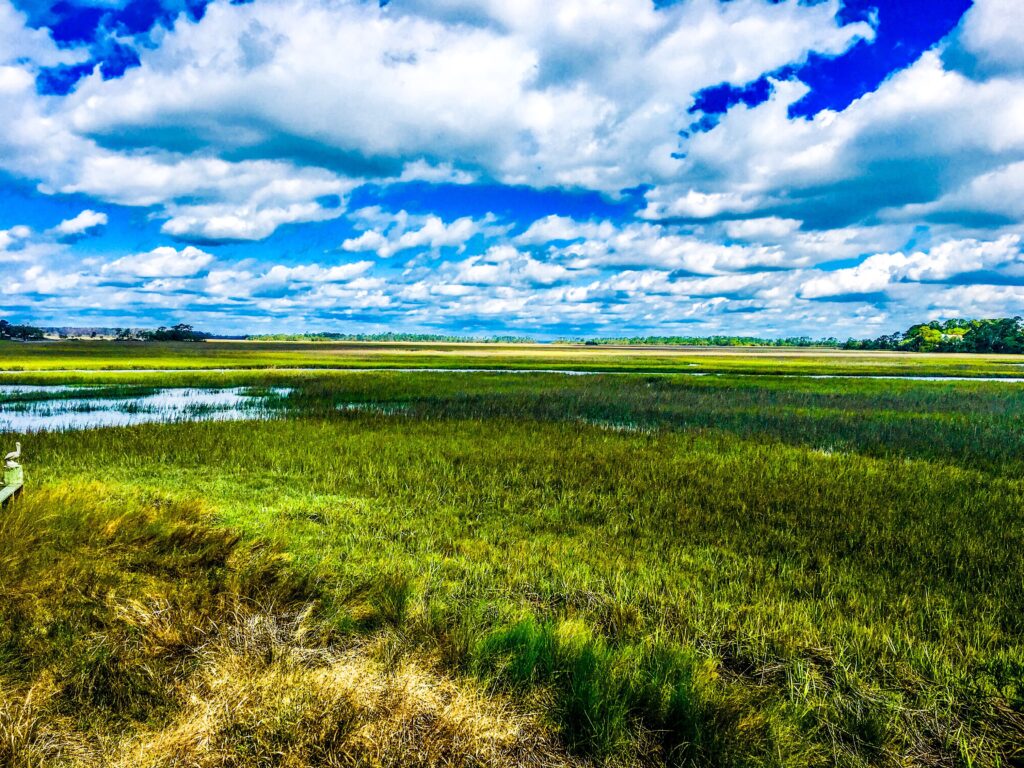
The marshes of the South Carolina Lowcountry are picturesque landscapes and rich ecosystems teeming with life.
For Karen and me, kayaking, fishing, and photographing the marshes are not just pastimes but a way of life—a source of inspiration and renewal that draws us back time and time again. In nature’s embrace, we find solace, serenity, and a profound sense of gratitude for the wonders of the world around us. Here are some intriguing facts about South Carolina’s marshes:
Unique Ecosystem
The marshes of South Carolina’s Lowcountry are part of one of the most unique ecosystems in the United States. They are characterized by vast stretches of tidal salt marshes, which are essential for the health of the surrounding estuarine environment.
Biodiversity Hotspot
These marshes support a diverse array of plant and animal species. They serve as nurseries for many commercially important fish species, including shrimp, crab, and various types of fish. Birds such as egrets, herons, and ibises also rely on the marshes for nesting and foraging.
Saltwater and Freshwater
The marshes are influenced by both saltwater and freshwater, creating a dynamic environment where unique adaptations have evolved. The tidal flow brings in nutrients and oxygen while flushing out pollutants, contributing to the ecosystem’s overall health.
Protection from Storms
Marshes act as a natural buffer against storm surges and coastal erosion. Their complex network of roots helps stabilize shorelines and reduce the impact of waves during storms, providing protection to inland areas.
Mudflats and Spartina Grass
One of the dominant plant species in South Carolina’s marshes is Spartina alterniflora, commonly known as smooth cordgrass. This grass forms dense stands in the intertidal zone, creating an important habitat for a variety of organisms. During low tide, vast mudflats are exposed, providing feeding grounds for birds and other wildlife.
Cultural Significance
The marshes of the Lowcountry have significant cultural importance to the region. They have been integral to the way of life for generations of people, influencing cuisine, art, and local traditions. Gullah Geechee culture, in particular, has strong ties to the marshes and estuaries of the South Carolina coast.

Challenges and Conservation
The marshes hold deep cultural significance for the people of the Lowcountry. For generations, they have shaped the way of life for those who call this region home. From traditional Gullah Geechee communities to modern-day fishermen, the marshes have provided sustenance, inspiration, and a sense of belonging.
Yet, despite their resilience, the marshes are not immune to the threats of modernity. Rising sea levels, habitat loss, and pollution pose significant challenges to their continued existence. Conservation efforts are underway to preserve and restore these invaluable ecosystems, but the task is daunting and requires the collective efforts of scientists, policymakers, and local communities alike.
Exploring the marshes of the South Carolina Lowcountry is more than just a journey through nature; it is a voyage of discovery, a quest to unravel the mysteries of life itself. It is an opportunity to witness firsthand the delicate balance that sustains our planet and to gain a deeper appreciation for the interconnectedness of all living things.
Learn More About The Carolinas
Dennis Stemmle is a bestselling author, entrepreneur, and lecturer at Coastal Carolina University. He writes about travel, college success, and entrepreneurship.
